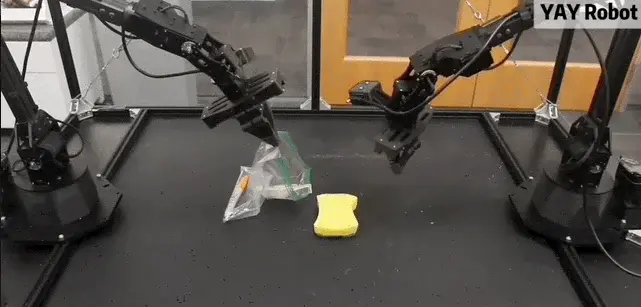No longer does YAY serve solely as an optimistic robot that seeks positive reinforcement – Stanford researchers have introduced it as a system that allows users to vocally instruct robots for instant performance enhancement, surpassing traditional programming methods with dynamic adjustments throughout tasks.
Real-Time Learning And Adaptation Solutions Available Now
On-demand robot performance improves through learning from user instructions. Consider an instance when your robot struggles to place a soft ball into its box: by employing YAY’s simple shout of “Squeeze the Ball!”, corrective commands are stored to enhance future performance of this task and even for intricate ones, like bagging groceries, blending fruits or washing dishes that involve bimanual manipulation and gentle handling of soft objects like sponges which require precise control.
Enhancing Task Performance Enhancing task performance enhancement
Should something go amiss while bagging groceries, an error such as dropping a sponge off can be quickly rectified with “Move to me, then left”. Though it may take multiple attempts for it to succeed successfully. The robot learns through each command that comes its way until eventually successful completion is reached.
Real-Time Adjustments And Optimizations
YAY not only corrects errors but also allows users to instantly modify task specifics. For instance, if an excessively full box occurs while filling it up with candy, simply shouting out “Less!” will prompt it to rectify itself and fine-tune its system accordingly – leading to reported 20% increased successful task completion rates!
YAY’s architecture includes both high- and low-level strategies; with camera data processed at high level for issue to the low level strategy controlling robot’s movements by sending instructions through human voice command as priority for real time adjustments.
Constant Learning And Improvement are necessary.
Additionally, this system features a feedback loop where verbal corrections are recorded and utilized to refine and optimize high-level strategy, gradually decreasing dependency on voice commands for control and refinement even post basic training. As an adaptive household robot capable of responding to user needs while developing under guidance YAY shows great promise as future advancements will likely follow suit in this space.


Leave a Reply